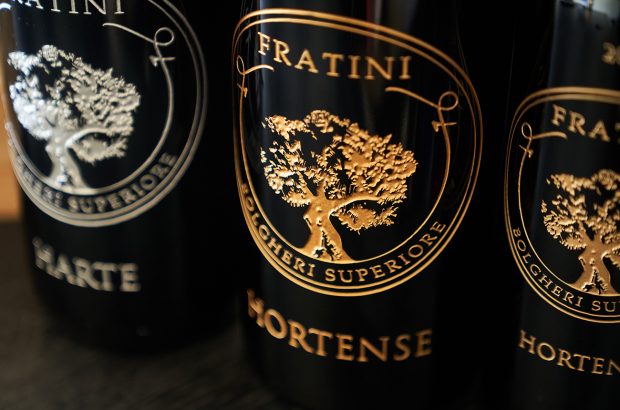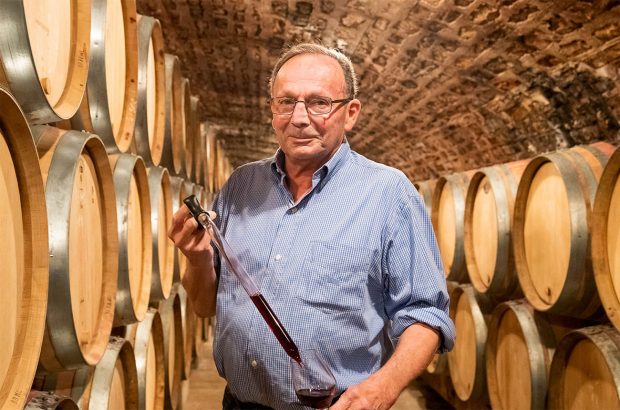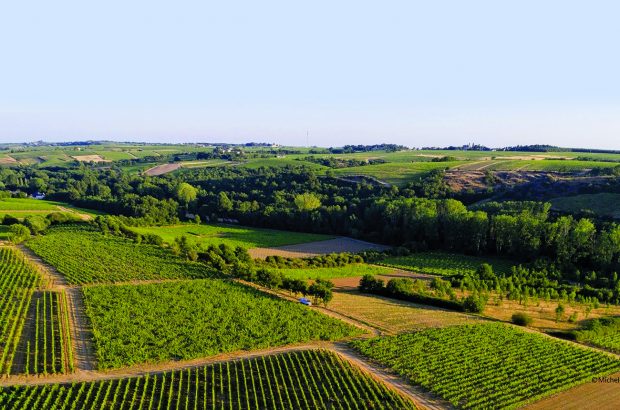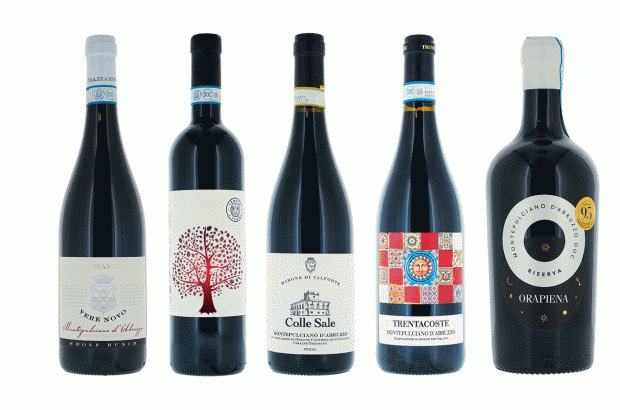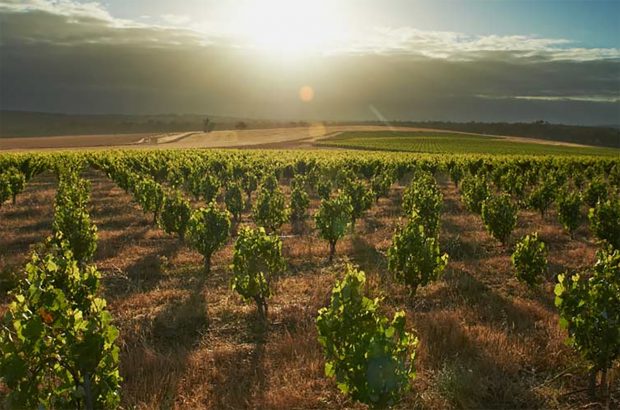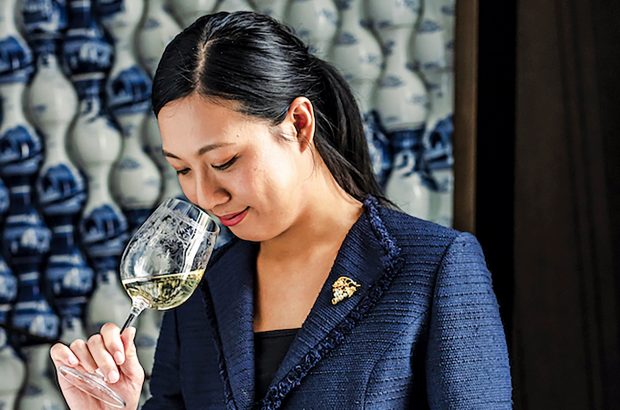Not so long ago, Rioja, Cava and sherry were the only names you needed to know to nod confidently as the vinous chat moved on to Spain. Now, however, only the best bluffers can get away with a carefully chosen phrase and a self-assured smile as such regions as Valdepeñas, Toro, Ribero del Duero, Rueda and Somontano are bandied around.
Valdepeñas, of course, has always been a good value but unglamorous red but, says Miguel Calatayud Fernandez of Bodegas Miguel Calatayud, ‘Valdepeñas has the heritage, not Rioja. Winemaking was big here in Phoenician times and the wonderful stone arch at Alcala was built by the Romans with wine taxes.’ He’s right, but there are parts of the region where you can’t help thinking the Romans have only just left!
In fairness, however, other aspects of Valdepeñas are space age. The Felix Solis Bodega, the third largest in Spain, has a crushing capacity of 4.5 million kilos of grapes a day and the bottling plant has four lines to handle an ear-piercing 100,000 bottles per hour. This one winery alone accounts for around half of all Valdepeñas’s wine, but if you’ve never heard of Solis, it produces an array of labels including the oft-seen Viña Albali.
Replacing traditional ideas
So, ambitious winemakers are using new technology to extract the best from both vineyards and wineries but, explains Ignacio Barroso del Real of Bodegas Real, ‘the terroir here is all. We now plant each grape variety on the right soil in the correct location.’
These movers and shakers are also replacing the traditional el vaso (bush) training with guyot training, not only to improve quality but to facilitate mechanical harvesting, a definite advantage as pickers become scarce. With 4,000 vignerons tending the 30,000 hectares (ha) of vines, and in a region where 70% of all grapes are sold on the bunch to bodegas, it’s inevitable that the latest vineyard technology will take time to become the norm, but the ‘quality message’ is spreading.
The fact that the best bodegas select at the gate, giving top grapes top pesetas, confirms that things are moving in the right direction, though a few Australian flying winemakers might push things along even faster. Those who refuse change will wither on the vine, if not in this generation, then in the next.mixing it up.
So there is Valdepeñas in a nutshell: a region of contradictions. On the one hand it is brimming with shiny new technology, on the other it is struggling to shake off the past.
More on Valdepeñas
Nestled within a ring of mountains, the region lies on the royal route between Madrid and Granada and the south. A drive north to Las Aberturas (the mountain passes) and west to Los Llanos (the plains), both accepted to be superior wine growing areas, confirms that the initial ‘total flat plain’ image of Valdepeñas is deceiving. Add to the equation altitudes of 650–850m, fertile soils and the underlying chalk with its priceless water retention qualities and you can see why the initiated are fast realising the vineyard potential.
Cencibel, the local name for the red Rioja grape Tempranillo, is also king in Valdepeñas, but that king of the world Cabernet Sauvignon is also allowed and is poised to be an important player. The law states that Cencibel must account for at least 85% of any DO (Denominación de Origin) wine, but with a 15% shot of Cabernet in there, don’t be surprised to see Valdepeñas following in the footsteps of Parker’s favourite, Ribera del Duero.’An 80/20 Cencibel/Cabernet blend gives an excellent balance. This is the future,’ confirms Domingo Megio of Bodegas Corcova, indicating that some are discarding the DO in favour of Cabernet. ‘We’re planting Cabernet to make a 100% wine not a blend,’ says Los Llanos’s Juan Sanchez-Moreno Rodrigues. Garnacha also plays its minor part as the blending understudy to Cencibel and it’s interesting that some ‘reds,’ such as Los Llanos’s Don Opas, are a blend of Cencibel and the white grape Airén.
Best Rioja: Top wines to try
The wines
Incredibly for such a hot region, red wines are in the minority, with the official 70/30 split favouring whites. Airén can hardly be called a prince, never mind a king, but it is nonetheless the major ‘blanco’, the other being Macabeo, a synonym for Rioja’s Viura. The duo could never be called dynamic but improved know-how is producing better wine. ‘We’re having some success with Macebeo, as well as planting Chardonnay,’ says Real.
Red varieties were dominant before phylloxera struck in 1911, but whites were replanted, reflecting the needs of the time. As the saying goes, ‘What goes around comes around,’ and today the whites are being grubbed up to make way for reds. ‘In seven to eight years there will be more red than white,’ predicts Juan Manuel Cruz of the Consejo Regulador, the governing body of Valdepeñas, noting that this move to quality is well founded as the price of red grapes far outstrips that of white.
It was the white grape glut that gave birth to the local ‘delicacy’ Clarete, a rosé lookalike that’s made as a red from a red/white blend. The locals love it and as it’s only 30% red grapes it hoovers up the whites admirably. It’s also good for cash flow, no doubt!
What is claret wine?
The link with Rioja extends beyond the grape as American oak ageing also plays a primary role, adding a sweet vanilla sheen to the approachable red fruit wines. As in Rioja, though, tradition is being challenged as more French barrels take their place in the chalk cellars to add an elegant toastiness.
‘At Bodegas Los Llanos we now have 80% American oak and 20% French. Our Gran Reserva Pata Negro is only aged in French oak. It may add 50p per bottle but it’s worth it,’ says Juan Sanchez-Moreno Rodrigues.
The Rioja connection doesn’t stop there. Valdepeñas labels also announce the ageing categories of Crianza, Reserva and Gran Reserva, each indicating similar time periods spent in barrel and bottle. Reserva’s minimum requirement of one year in barrel and two in bottle before release again shows the value that the region offers.
These are fascinating times in Valdepeñas. The ‘also ran’ image is no longer acceptable to the best winemakers who are determined to extend the region’s links with both Ribera del Duero and Rioja far beyond grape and barrel.









